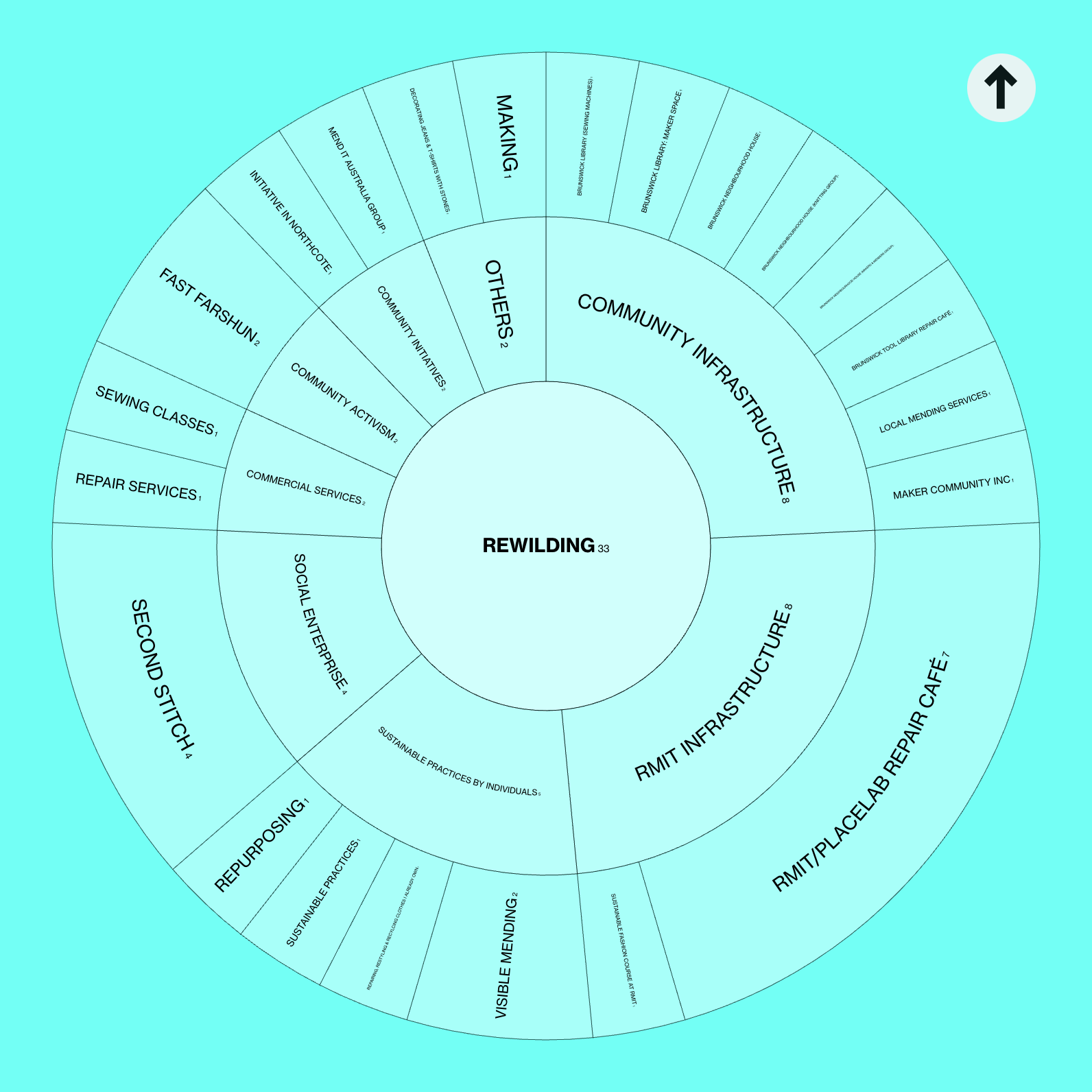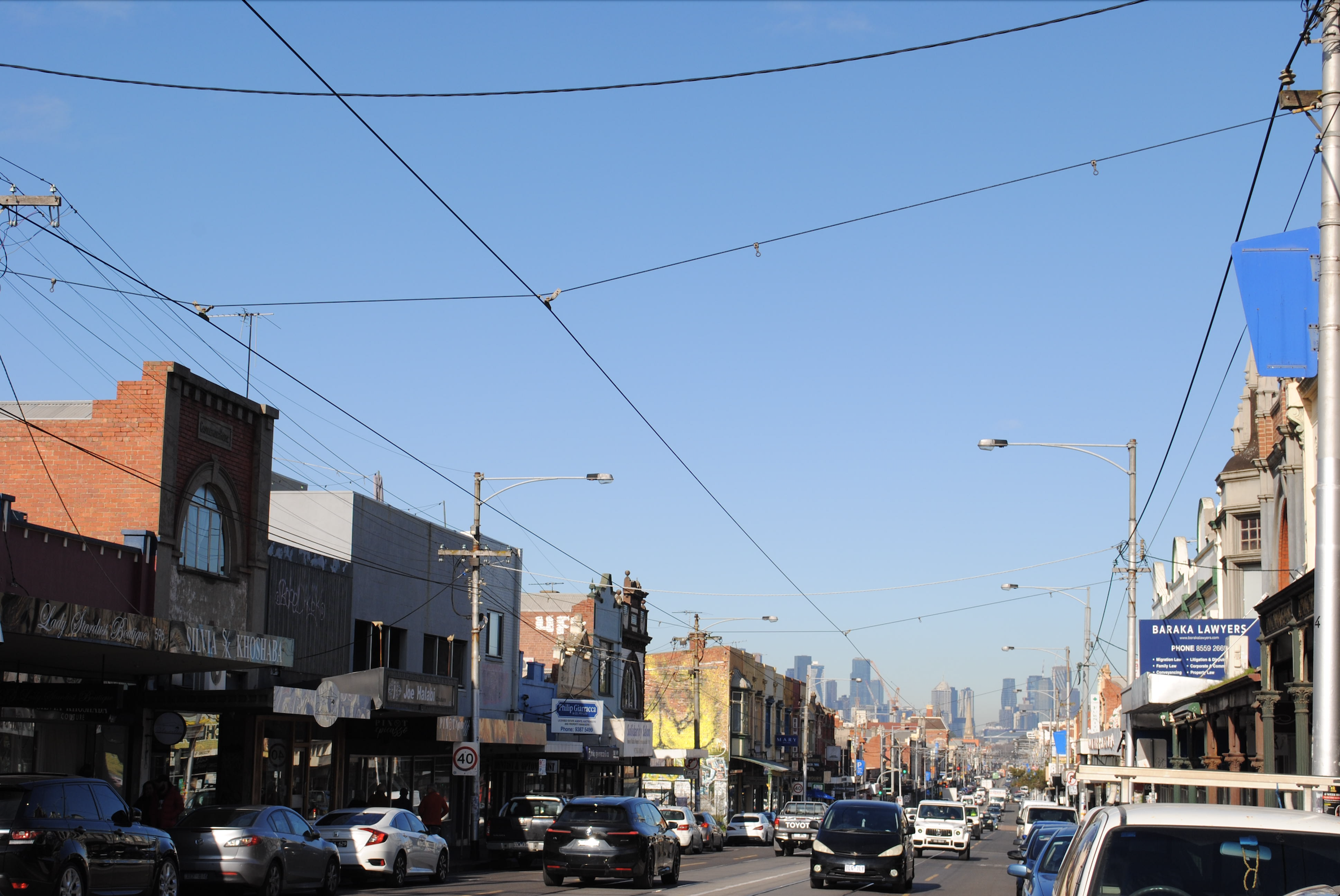
‘Wear & Care’ Research Surveys
Our PlaceLab Brunswick team conducted two research surveys as part of the ‘Wear & Care’ Research Project engaging the community and Brunswick-based second-hand clothing retailers.
Community Research Survey
People from across our Brunswick and wider Melbourne community participated in helping us explore local clothing practices, and how these actions intersect with “rewilding” or “taming” concepts in fashion. The Survey was designed to generate quantitative results, with particular responses leading to questions requiring a qualitative response in order to elicit deeper insights from respondents. The online Survey engaged 482 people and was completed in full by 421 people, with 35% (149) of respondents living in Brunswick. Given the topic of inquiry and patterns within social research, 80% of respondents identified as female. Additionally, the survey was principally promoted via Instagram, which means that most respondents fell within the age group of 18-29 years.
This demographic information was interesting for two key reasons:
Firstly, it supports an emerging theme across the ‘Wear & Care’ Research Project of the emphasis on ‘women’s work’ and recognition that so much of the weight of driving individual and community action towards more sustainable clothing practices is carried by women, too often in the form of unpaid labour through making, mending or teaching skills. Secondly, it reflects a wider movement towards sustainable change within a younger cohort of people.
Expanding on this recurring theme throughout the Research Project to acknowledge that the work of sustainable fashion change is mostly the work of women, we observed conversations on the social movement around gender that is shifting and resisting the tendencies of the past to focus learning opportunities for mending and making by gender. Emerging attitudes to gender mean that young people are less constrained by gender norms.
What makes up the clothing in your wardrobe?
We asked Survey participants what makes up the clothing in their wardrobes. Interestingly, the ‘second-hand clothing’ and the ‘new clothing’ percentages were very similar. This reflects an embrace of second-hand clothing as part of people’s everyday wardrobes. Although it may indicate engagement with practices that lean towards the concept of “taming” excesses of the fashion system, it shows that people are connecting with more sustainable, community-accessible practices in their wardrobes. Those who indicated having second-hand clothing in their wardrobes were also asked where their second-hand clothing was from. The highest response was charities or not-for-profit organisations.
‘What makes up the clothing in your wardrobe?’ Flourish Data Visualisation.
Where do you donate or recycle your unwanted, worn or damaged clothes?
We first asked Survey participants what they do with their unwanted, worn or damaged clothes they want to remove from their wardrobe. The highest response indicated ‘donate or recycle’. When asked where they donate or recycle their unwanted, worn or damaged clothes, we found that most of those garments end up with charity and not-for-profit organisations, which are experiencing the enormity of Australia’s textile waste. This is critical when we consider the scarcity of resources (time, people) to repair garments, even small mends like replacing a button, as communicated by Brunswick-based second-hand clothing retailers â more on this below!
‘Where do you donate or recycle your unwanted, worn or damaged clothes?’ Flourish Data Visualisation.
If Other, can you let us know?
Community members let us know about other places they donate, and recycle their unwanted, worn or damaged clothes.
Can you tell us about any other local fashion “rewilding” practices or activities that you know are occurring in Brunswick?
We discovered that an array of fashion “rewilding” and “taming” actions occur here in Brunswick. When we asked our Survey participants, the responses that were categorised as community infrastructure and initiatives around mending, repairing and repurposing, produced the highest results. This sheds light on the importance of these resources when engaging the community to grow and nurture repair and repurposing practices. Furthermore, we asked Survey participants, ‘how do you wear and care for the clothes in your wardrobe?’ The highest response, with 73% of responses, was ‘I mend and repair my own clothes’, while the second highest response at 49%, was ‘I alter my own clothes to fit me better’. This indicates a high interest and existing engagement in these practices amongst Survey respondents that could be further supported through community infrastructure and initiatives.
Brunswick-Based Second-Hand Clothing Retailer Survey
We reached out to 16 Brunswick-based retailers to participate in a survey of second-hand clothing retailers that call Brunswick home. Across charity, not-for-profit, consignment and for-profit second-hand clothing retailers, six retailer representatives participated in a survey delivered online using Qualtrics. Five other retailer representatives joined in conversations with our Brunswick team at their retail stores, forming anecdotal research, to help us learn about retail business practices around repair, alterations, or redesign of second-hand clothing in Brunswick.
Why you should learn to sew on a button and other simple mends!
We recognised the power of learning the simple skill of sewing on a button to create change at an accessible but impactful level. It’s a life skill, but it can also save a garment from landfill. Through our survey of Brunswick-based second-hand clothing retailers, we learnt that everyday garments donated to not-for-profit and charity stores with missing buttons are generally not repaired.
The stores don’t currently have the resources (time, people) and capacity to repair garments â even small mends like replacing a button. Therefore, most of these garments are discarded at the sorting phase, destined for landfill, before even making it into the store for sale.
This means that, if you take the time to replace a missing button on an otherwise wearable garment, it has a better chance at another life with a new wearer. If you don’t repair it before donating, the garment can sadly be sent straight to landfill. It’s a simple intervention with big impact.
We learnt what might foster the growth of repair, alteration, or redesign activities for second-hand clothing retailers!
Brunswick-based retailers recommended that having more volunteers in the team that are willing to mend and also, developing repair knowledge through education amongst staff and the community, would help foster these activities in their businesses.
A massive thank you to everyone who contributed to our community Survey and the 11 retail businesses and organisations that shared their insights with us through the Retailer Survey or in face-to-face conversations.
